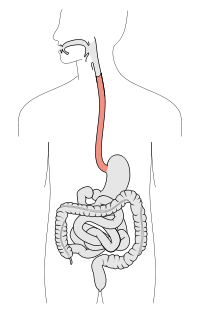
Photo from wikipedia
Stair ascent is an activity of daily living and necessary for maintaining independence in community environments. One challenge to improving an individual's ability to ascend stairs is a limited understanding… Click to show full abstract
Stair ascent is an activity of daily living and necessary for maintaining independence in community environments. One challenge to improving an individual's ability to ascend stairs is a limited understanding of how lower-limb muscles work in synergy to perform stair ascent. Through dynamic coupling, muscles can perform multiple functions and require contributions from other muscles to perform a task successfully. The purpose of this study was to identify the functional roles of individual muscles during stair ascent and the mechanisms by which muscles work together to perform specific subtasks. A three-dimensional (3D) muscle-actuated simulation of stair ascent was generated to identify individual muscle contributions to the biomechanical subtasks of vertical propulsion, anteroposterior (AP) braking and propulsion, mediolateral control and leg swing. The vasti and plantarflexors were the primary contributors to vertical propulsion during the first and second halves of stance, respectively, while gluteus maximus and hamstrings were the primary contributors to forward propulsion during the first and second halves of stance, respectively. The anterior and posterior components of gluteus medius were the primary contributors to medial control, while vasti and hamstrings were the primary contributors to lateral control during the first and second halves of stance, respectively. To control leg swing, antagonistic muscles spanning the hip, knee, and ankle joints distributed power from the leg to the remaining body segments. These results compliment previous studies analyzing stair ascent and provide further rationale for developing targeted rehabilitation strategies to address patient-specific deficits in stair ascent.
Journal Title: Journal of biomechanical engineering
Year Published: 2018
Link to full text (if available)
Share on Social Media: Sign Up to like & get
recommendations!